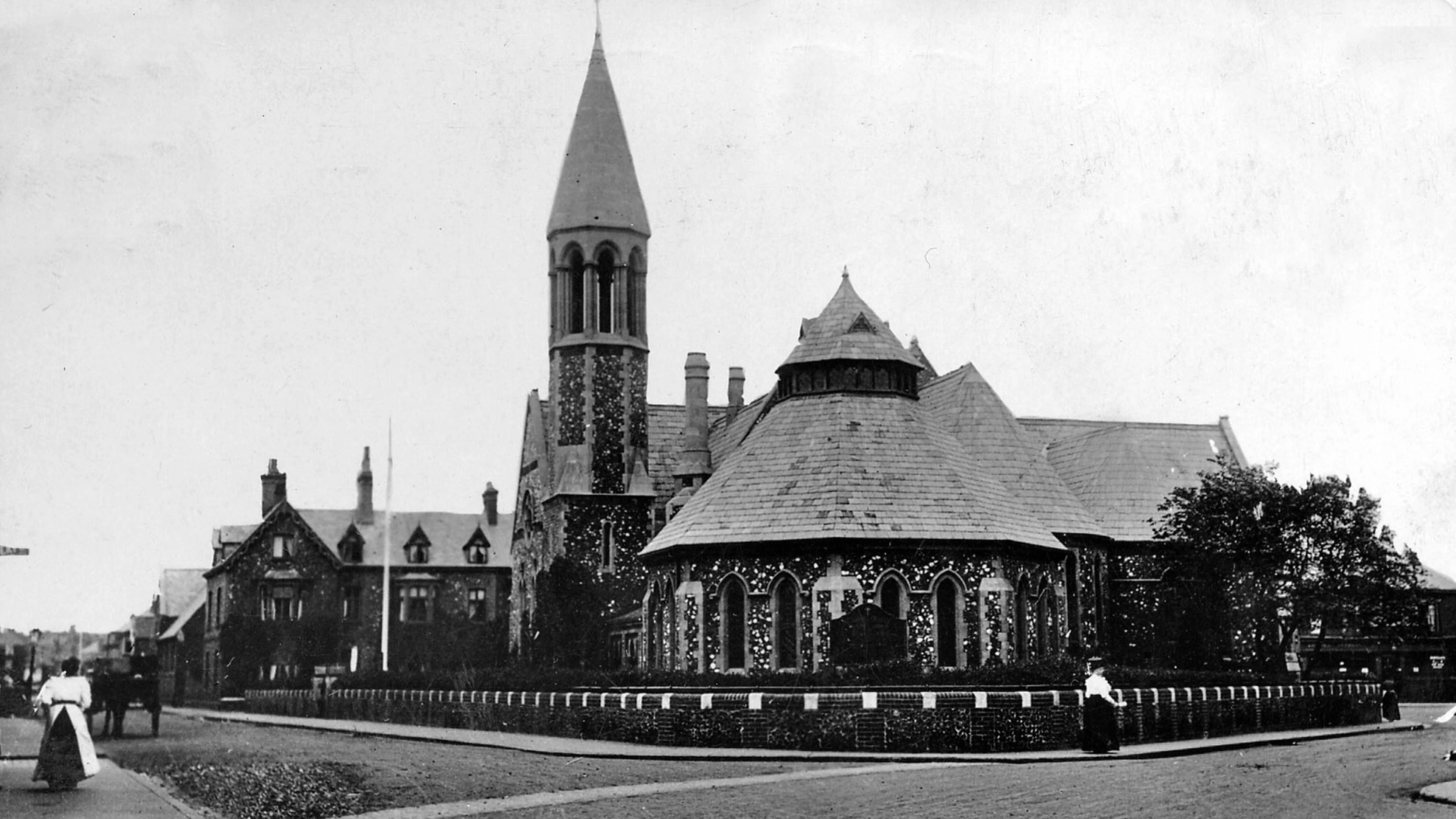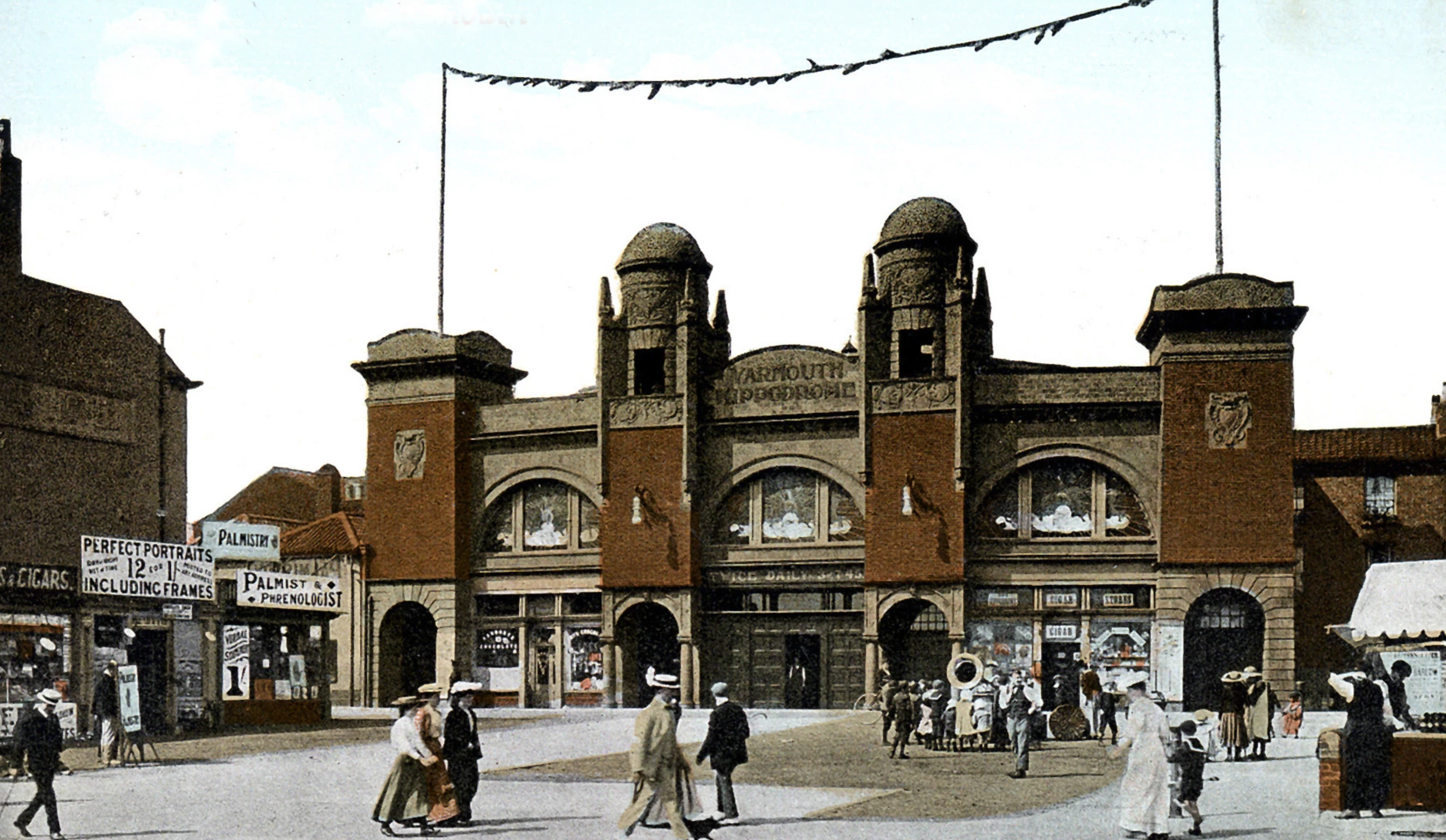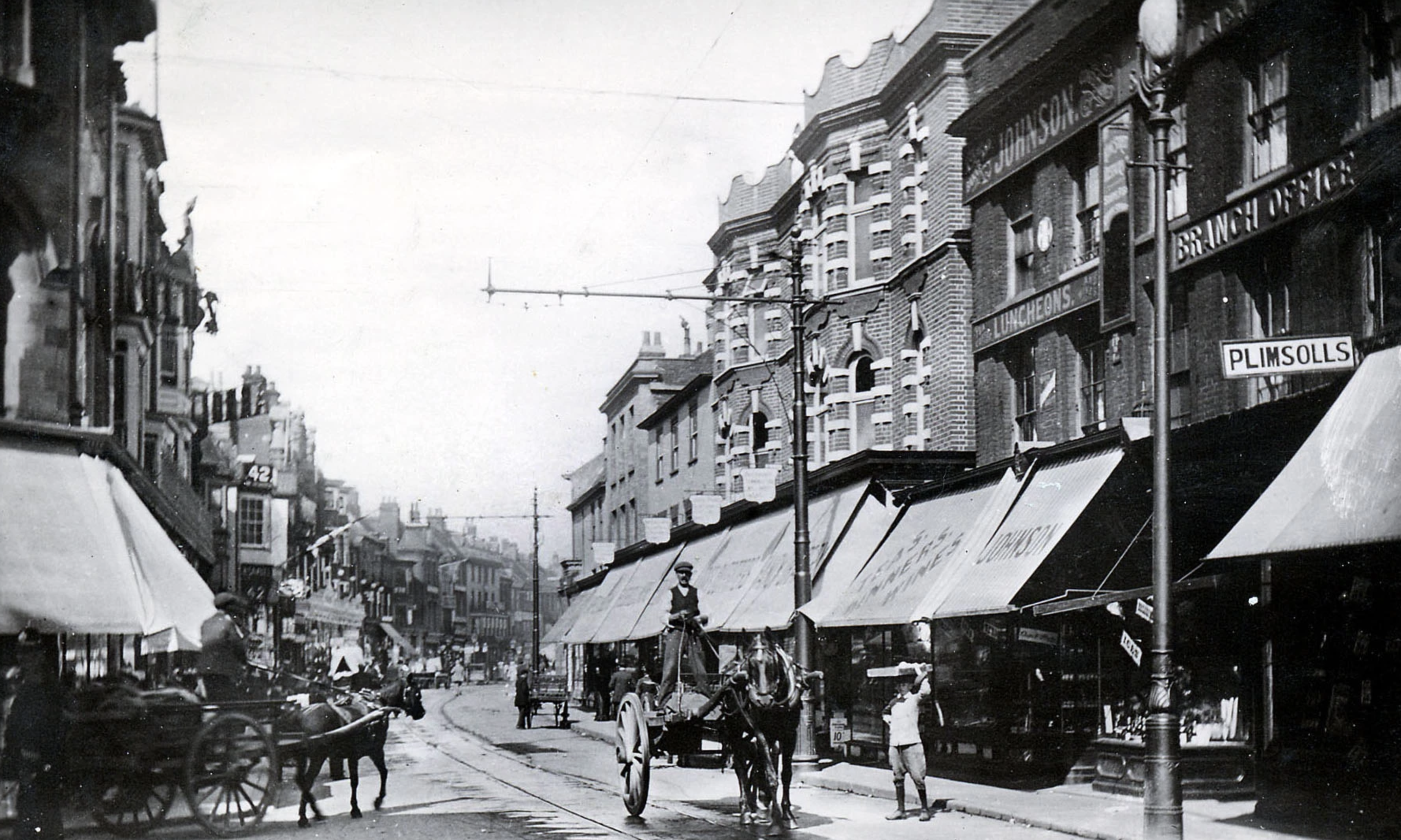Bijou Hall

The first time moving pictures seen by the public in this country was at a demonstration by the Lumiere Brothers of Paris at the Empire, Leicester Square, London in March 1896. The first opportunity the people of Great Yarmouth had to see the new cinematograph was one year later, in March 1897, when the local paper announced that there would be a presentation of Live Photographs : the Marvel of the Age at the Liberal Club Assembly Rooms, also known as the Bijou Hall. The hall stood between Rows 40 and 43 in the Market Place. The hall was a popular venue for many different social events.
The early newsreel-type shows quickly developed into feature films and purpose built cinemas began to appear. The Gem, now the Windmill, opened in 1908, the Empire in 1911 and the Regent in 1914. The Bijou Hall continued to show films until 1914, when it was demolished and in its place was built the Central Cinema, opening on Easter Monday 1915 with the newly released silent film, Florence Nightingale. Performances were continuous from 11am until 10.30pm. There were 627 seats, which cost 3d., 4d. and 6d., or 6d. and 1/0d. in the balcony. The Central was the first to incorporate the word Cinema in its name and was built by the Lowestoft firm of T. H. Yelf. The exit doors opened into Rows 40 and 43, on either side of the building.
The Central closed for a few months in 1922, due to financial difficulties and, in December 1928, the cinema changed its name to the Plaza. The last silent film, The Red Dancer of Moscow, was screened in October 1930 and a sound system was then installed, making the pianist and the trio of musicians, who had played for the silent films, redundant. It was then described in the local paper as Yarmouth’s favourite talkie theatre and continued to show films until it closed in 1939 with the outbreak of war.
Following the destruction of their King Street shop in an air raid in 1941, Marks and Spencer used the old cinema as a temporary store from 1946 until their King Street store was rebuilt and reopened in 1952.
The last film was shown in August 1954. The building was demolished in 1958 and a new store, F. W. Woolworth was erected on the site, which included Rows 40 and 43. The building is now occupied by a Poundland store.
The Plaza as Marks & Spencer



